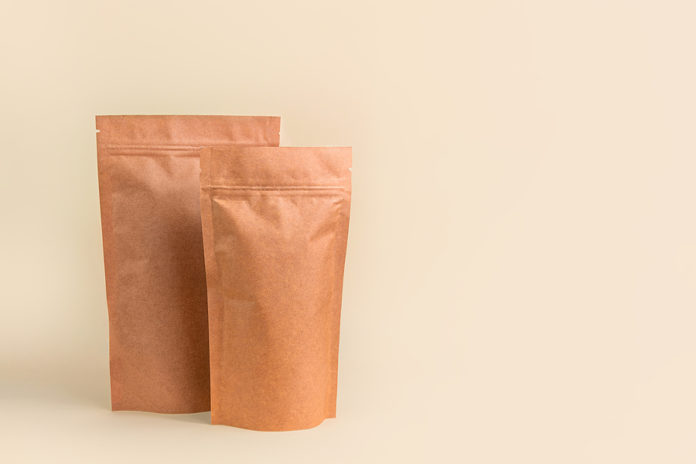
By Michael Waas, VP, North America, at TIPA
The consumer experience often starts with the packaging, as packaging is usually the first thing consumers see and where they look for more information about the product. Of course packaging is also practical, and needs to meet specific, but widely varying, performance standards depending on what items it is protecting and for how long.
Today, one of the most important things about packaging is its environmental impact and sustainability. Brands, especially those that sell products that are organic or sustainable, must embrace this because customers are demanding it. In fact, 83% of consumers under the age of 40 – those who will dominate the market for the coming decades – are willing to pay more for sustainable packaging.
But sorting through all of the options and environmental claims can be confusing, especially with so many new innovations. Understanding the differences between recycling and composting, and biodegradable and plant-based, can take brands a long way when it comes to deciding on the right packaging materials. Here is a guide to help brands better understand their options.
What is the difference between recyclable, compostable and degradable packaging?
These terms are all associated with eco-friendly packaging, but have major differences and important nuances. The Federal Trade Commission’s (FTC) Green Guides provide guidance and rules for when such terms can be used. The term recyclable is probably the most confusing. Packaging marked as recyclable means that it needs to be disposed of in recycling bins, assuming it is relatively clean and sorted into the right category. But while 32% of Americans participate in recycling programs, it is important to remember that not everything tossed into a recycling bin is actually recycled, mainly because the process is quite often not economically viable. Moreover, one of the most confusing aspects of things marked “recyclable” is that consumers then often believe the items were also made from recycled materials.
Compostable materials include those that break down in a safe and timely manner when combined with other organic matter like food scraps. The FTC also requires that brands specify if something needs to be composted in an industrial composting facility rather than at home. Most uncoated cardboard and paper – along with a growing number of compostable plastics – fit in this category. An added benefit of compostable materials is that they not only solve the challenge of waste, but also help produce valuable agricultural compost that can nourish farms and fields and help mitigate soil degradation.
Claims about packaging being degradable are very confusing. In reality, almost anything degrades over time, including plastic (over hundreds of years), but the amount of time and what, exactly, the product turns into, are key in evaluating their impact on the environment and human health. In both their selection of packaging and in how they present it to their customers, brands need to be careful to fully understand and explain such claims. Items should only be marked degradable if they also include an explanation of how to dispose of them; for example, bags that degrade only if buried in soil need to specify that, as the bags will not disappear if taken to a landfill or incinerator.
What if something is made from recycled materials or bio-based materials?
A recent survey showed that 59% of consumers feel better if they buy products made from recycled materials, and would even pay 29% more for such products. But especially when it comes to packaging, which will most likely be disposed of quickly, it should be pointed out that not everything made from recycled materials can be recycled itself.
This is particularly important when it comes to plastic. A piece of plastic can only be recycled up to three times before its polymers become too weak for new products. So that means that just because something is labeled as made from recycled plastics, it may not be able to be recycled and will need to be thrown in the trash. Also, items and packaging made partly from recycled plastic often require the addition of new polymers, meaning that such objects are ultimately creating more plastic waste.
Overall, while a product’s source materials are important to consider with regards to overall sustainability, companies need to understand that a product’s source material is not connected to a product’s end of life and does not always determine its end of life, or whether it can be composted, recycled, left to biodegrade, or requires disposal in a landfill.
Is all plastic bad?
While it is true that plastic packaging can be recycled, it is important to remember that only 9% is actually recycled into new products, and many types of plastic cannot be recycled at all with current technology. Another roadblock for recycling plastic is that much of it is contaminated with food or other matter, rendering it not possible or too expensive to clean in order to be recycled.
There are compostable plastics, which can be a good option for packaging, especially for brands looking for transparent or flexible materials. Although it can be used for anything and is durable enough to last for months on the shelf, this type of plastic is especially suitable for packaging food, which can be composted along with the packaging, making things easier for consumers, and delivering more residual waste to composters.
If using this type of material, make sure the manufacturer has truly tested it and find out if it is designed to break down in a home composter or backyard compost pile, or needs to be sent to an industrial compost facility. If choosing compostable plastics, companies should seek out the growing number of certification labels, which help both composters and consumers understand how to recognize and best dispose of compostable products.
What packaging is best for my product?
The answer to this question is that it will depend on many factors. Brands need to balance a multitude of performance requirements – shelf life, barrier properties, etc – in addition to weighing the environmental impacts.
The most important element is for brands to make sure that they even need packaging, then that they have all of the relevant information and a thorough understanding of all the options. With this they can communicate to consumers about why they made the choice they did, and most crucially, let consumers know the best way to responsibly dispose of the packaging in a way that contributes to solving our waste problem, rather than making it worse.
 Michael Waas is the VP, North America, at compostable packaging company, TIPA. Previously, Michael played an integral role as Global Vice President at TerraCycle for over a decade, expanding the company’s brand-funded recycling programs to 20+ global markets in Europe, Latin America, Australia, and New Zealand. A Central Michigan University graduate with an M.A. in International Relations, Michael developed a vast career in sustainability which eventually introduced him to TIPA.
Michael Waas is the VP, North America, at compostable packaging company, TIPA. Previously, Michael played an integral role as Global Vice President at TerraCycle for over a decade, expanding the company’s brand-funded recycling programs to 20+ global markets in Europe, Latin America, Australia, and New Zealand. A Central Michigan University graduate with an M.A. in International Relations, Michael developed a vast career in sustainability which eventually introduced him to TIPA.








